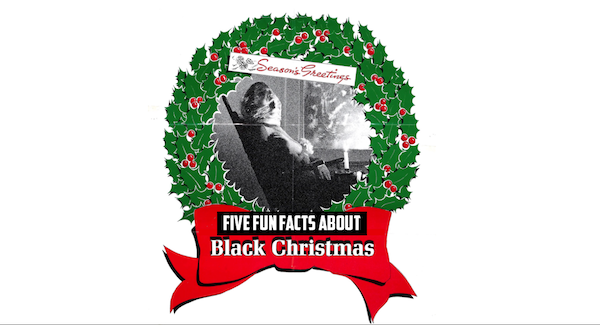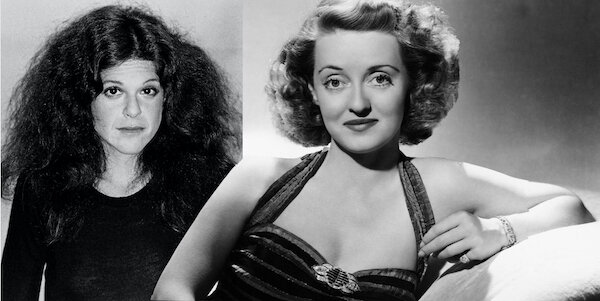Five Fun Facts About Black Christmas (1974)
It’s funny to think that the director of Porky’s, A Christmas Story, and Baby Geniuses made a horror film, let alone one that has become a part of horror history, but Bob Clark’s Black Christmas has managed to stand the test of time.
Released roughly two months after Tobe Hooper’s monumental horror staple, The Texas Chainsaw Massacre, in 1974, it remains a seminal slasher and cult classic. In addition to combining a deranged killer with the cheery Christmas season, the film also brought the horror to an urban environment four years prior to John Carpenter’s Halloween, which famously put the slasher into the mainstream. It also added a refreshing dose of feminism, tackling the subject of abortion and a woman’s right to choose, which further proves it was way ahead of its time. It still impressively holds up today, despite a lot of its most innovative elements and twists being spoiled by just about every slasher that’s went stalking in its footsteps.
This year, we’re bringing the horror to the holidays with some fun facts about the film and its production!
The film has roots in urban legend and real-life events.
The film was written by Canadian screenwriter A. Roy Moore, who initially developed the screenplay under the title “Stop Me,” and he took inspiration from both urban legend and a real-life series of murders.
The urban legend was known as “The Babysitter and the Man Upstairs,” which had become widespread during the 1970s. The story centers around a teenage girl babysitting who continually receives telephone calls from a stalker asking her to "check the children."
The real-life incident occurred around the Thanksgiving holiday season in the Westmount area of Montreal on November 17, 1943. They were shockingly committed by a 14-year-old boy named George Webster, who brutally battered several family members with a baseball bat, leaving his mother dead and three others seriously injured.
While the script had an excellent foundation by mashing legend with reality, it also went through several changes throughout its development. Film producers Harvey Sherman and Richard Schouten suggested the college university setting, and director Bob Clark made several dialogue alterations and incorporated humor (like the drunken of Barb and Mrs. Mac — the later being based on Clark’s aunt). It was also Clark who was adamant about eschewing the typical depiction of young adults from American films, which Clark felt had “[no] sense of reality.” Instead, he set out to capture their astuteness, stating: "College students—even in 1974—are astute people. They're not fools. It's not all 'bikinis, beach blankets, [and] bingo'."
Bonus fun fact: Even the film’s title had a larger evolution. Like we mentioned above, Moore originally titled the film as “Stop Me.” It was Clark who came up with the title "Black Christmas," because of its irony. The title is also a flippant reference to the beloved Christmas song — and equally beloved 1954 film — "White Christmas."
Clark’s preferred title didn’t sit well with the executives over at Warner Bros. though. No, they thought the title “Black Christmas” would be misconstrued as a blaxploitation film (if only, you know, there were things like trailers and posters and other marketing stuff to, you know, tell an audience what your film is). For the film’s theatrical run in America, Warner released it under “Silent Night, Evil Night,” which is almost as good as Clark’s title (and probably served as an inspiration for Silent Night, Deadly Night). After its initial theatrical run, however, they changed it back to the title we know it as today.
It inspired John Carpenter to make Halloween.
If all this talk about babysitters and sadist murders who stalk women and wreak havoc in an urban environment didn’t ring any bells, it should now. Black Christmas broke so much ground and basically wrote the playbook that Carpenter put his own masterclass spin on; it has a high body count, point of view shots, and the now infamous “final girl” plot device, among other things, which have all become staples to the genre.
After the film’s release, Clark and Carpenter were working on a project that was never released. During their work together, Carpenter told Clark how much he loved Black Christmas and asked if a sequel would ever be made. Clark expressed no desire to go that route (even though he totally would less than a decade later with Porky’s II: The Next Day), but had no problem tossing out a few suggestions.
“It’ll be he was captured after all, he was put in an institution, and the movie will begin the night he escapes, back in town, and they don’t know it yet, and I’m gonna call it Halloween,” Bob Clark recalled telling Carpenter.
Bette Davis and Gilda Radner were both offered roles.
Yup, that’s right, in some alternate universe, we’d have a cut of this film with Bette Davis and Gilda Radner, which would be pretty darn cool.
The role of drunken Mrs. MacHenry — or Mrs. Mac — was initially offered to Bette Davis, but she straight up turned it down. Which totally opened the door for Marian Waldman to step in and crush it, delivering an iconic performance as the drunken and foul-mouthed housemaster of the sorority.
Radner was closer to the project. She was offered the role of Phyllis Carlson, a bookish and quiet young sorority sister, and she was officially attached to the project. Except there was this little thing, I don’t know if you’ve heard of it, called Saturday Night Live, which Radner was also attached to. She dropped out of the project one month prior to shooting due to SNL commitments. Andrea Martin was eventually cast in the role, and she would later star as Mrs. MacHenry in the crappy 2006 remake.
Both the film’s score and the audio for the disturbing phone calls took an avant-garde approach.
To create the mysterious music for the film’s score, composer Carl Zittrer tied forks, combs, and knives onto the strings of a piano to warp the sound of their notes when played. To further distort the sound, he recorded it onto an audiotape and then slowed it down.
Multiple actors, including Bob Clark, lent their talents to record the disturbing phone calls for the film, but a bulk of the work was provided by Nick Mancuso. To get a specific sound, Mancuso would stand on his head during the recording to compress his throat, which he felt made his voice sound more demented. He would spend three days voicing Billy, the film’s deranged murderer, and he later recalled the experience as being very “avant-garde,” with Clark often encouraging him to improvise with the character’s voice.
It’s one of Steve Martin’s all-time favorites.
In 1986, Olivia Hussey (AKA Jess) met the producers for the Steve Martin fronted comedy Roxanne, who were interested in casting her for the titular role. Of course, the role of Roxanne went to Daryl Hannah, instead of Hussey, but while Hussey was meeting with the producers, she had an encounter with Martin. She recalled him saying, "Oh my God, Olivia, you were in one of my all-time favorite films!”
Hussey was thinking he was referring to her role in 1968’s Romeo and Juliet, and she was genuinely surprised to find out he was actually talking about Black Christmas, which he claimed to have seen around 27 times.
What do you think? We want to know. Share your thoughts and feelings in the comments section below, and as always, remember to viddy well!






